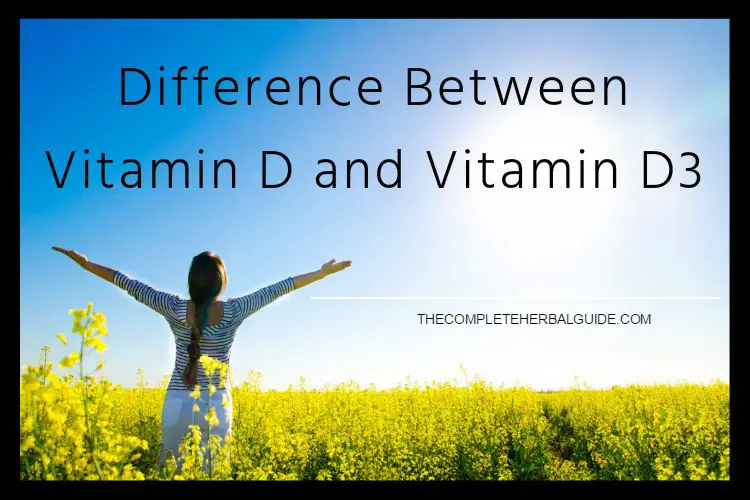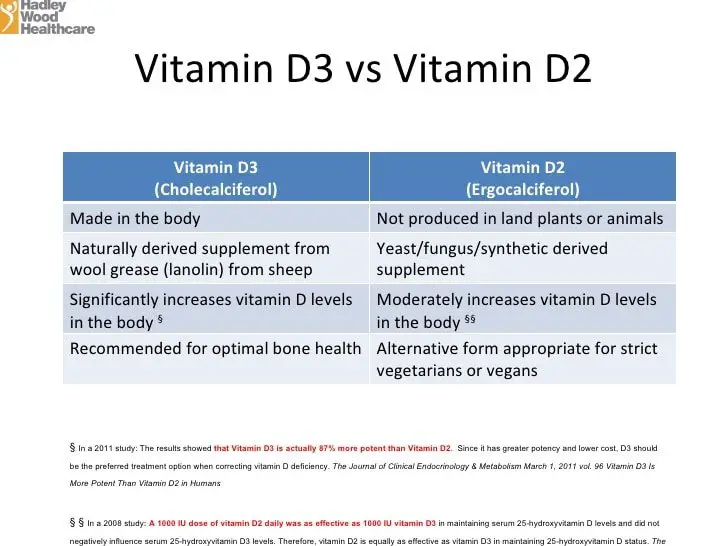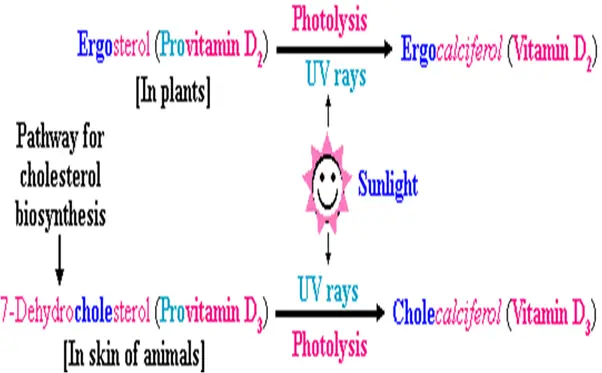What Are The Best Sources Of Vitamin D
Its hard to get enough vitamin D from sunshine, but its even harder to get it from foodat least the way most people eat. The best source of dietary D is from fish livers, such as cod liver oil, but now ask yourself when was the last time you ate cod liver oil?
Mackerel, salmon, sardines, swordfish, trout, and tuna all offer D, as do mushrooms and eggs. If you eat them regularly, youll meet the government-recommended requirement, but if youre in the camp that thinks 600 IU is too low, youll need to be more aggressive to hit your D goals. Dairy products and cereals are fortified with vitamin D, which helps, but one review, and Harvard University, determined that supplementation with a multivitamin or concentrated vitamin D capsule provides a better insurance policy.
Of course, you shouldnt completely avoid the sun. According to a report in Alternative Medicine Review, the health benefits accruing from moderate UV irradiation, without erythema or excess tanning, greatly outweigh the health risks, with skin pigmentation providing much of the protection.
Difference Between Vitamin D And Vitamin D3
Vitamins are essential nutrients that our boy needs in small amounts to work properly. Vitamin D is one of the complex vitamins needed by our body to grow and develop. Vitamin D is available in two forms known as vitamin D2 and vitamin D3. There are quite a few differences between vitamin D and vitamin D3 but the main difference between them is that vitamin D is a fat-soluble vitamin that regulates calcium and phosphorous levels of the body whereas the vitamin D3 is the natural form of vitamin D produced by the body from sunlight. Given below are more differences between vitamin D3 and vitamin D.
Should I Take Vitamin D Or D3
Vitamin D and vitamin D3 are each effective vitamin D supplements. Vitamin D2 is approved in the treatment of hypoparathyroidism, vitamin D resistant rickets, and hypophosphatemia. Both supplements are commonly used for vitamin D supplementation.
Studies have shown that vitamin D3 supplements may be superior in raising the bodys vitamin D stores. There are many health benefits to vitamin D supplementation, but your doctor should use lab tests to recommend the amount of vitamin D you should take and which form.
Don’t Miss: Can Prenatal Vitamins Help You Conceive
What Is Vitamin D3
D3 is a type of vitamin D that comes from animal sources and its classically more potent than the plant-based type. Vitamin D3 also known as cholecalciferol, is one of the most important vitamins for human health.
Vitamin D3 is essential for bone health and total body health. The function of Vitamin D3 is to help regulate calcium and phosphorous levels. There are two types of vitamin D, Vitamin D2 and D3 .
It is a fat-soluble vitamin that plays an important role in the bodys ability to absorb calcium and phosphorus. Vitamin D3 helps to manage the levels of these two minerals in the blood, which are necessary for bone growth as well as strong teeth.
The effects of too little or too much Vitamin D3 can be serious. Some sources of this vitamin include eggs, oily fish such as salmon, and vitamin supplements. It can come in the form of capsules or liquids which are sometimes taken orally and other times injected into the body.
Is Vitamin D3 Better For You Than Vitamin D Deficiency

Both forms increase blood levels of vitamin D and both can treat and prevent rickets caused by vitamin D deficiency, but research has shown that vitamin D3 is effective at increasing blood levels of vitamin D for a longer period of time. Longer than vitamin D2. Vitamins D2 and D3 also come from different sources. Vitamin D2 is of vegetable origin.
Recommended Reading: What Vitamins Are Good For Acne
Can Vegans Take A Vitamin D Supplement
Vegans can be more susceptible to a vitamin D deficiency. The double whammy of not getting enough sunlight during the winter months and not being able to eat most of the food sources of vitamin D can make it a little more difficult.
However, even with meat, dairy and eggs off the menu, there are still natural vegan sources of vitamin D like mushrooms for vitamin D2 and lichen for vitamin D3.
As these are limited, a vitamin D supplement is recommended. Especially for vitamin D3 as we dont think many vegans will be chowing down on some lichen!
Does Vitamin D3 Give You Energy
Increasing vitamin D intake is thought to improve energy. A clinical trial was done examining fatigue levels in patients who were identified as vitamin D deficient. These patients were given vitamin D3 supplementation to increase blood levels of vitamin D, and the results showed a significant improvement in fatigue levels. Scientists have shown this may be due to vitamin Ds effect at the cellular level where it augments mitochondrial oxidative phosphorylation in skeletal muscle. This decreases muscle fatigue.
Don’t Miss: Which Vitamins Should I Take Daily
Chewable Vitamin D For Children
It looks like a sweet treat, it tastes like a sweet treat, no wonder your kids will probably prefer chewable vitamin D capsules!
We stock a wide range of chewable vitamin D, such as Wellkid Peppa Pig Vitamin D Soft Jellies which contain the exact level of Vitamin D recommended by the Department of Health England.16
We also offer child and Teen Omega 3 Fish Oil Chewy Capsules with Vitamin D, so they get their all-important omega 3s along with their daily dose of vitamin D.
Vitamin D3 Is Formed In Your Skin
Your skin makes vitamin D3 when its exposed to sunlight.
Specifically, ultraviolet B radiation from sunlight triggers the formation of vitamin D3 from the compound 7-dehydrocholesterol in skin .
A similar process takes place in plants and mushrooms, where UVB light leads to the formation of vitamin D2 from ergosterol, a compound found in plant oils .
If you regularly spend time outdoors, lightly clad and without sunscreen, you may be getting all the vitamin D you need.
In Indian people, an estimated half an hour of midday sun twice a week provides the adequate amount .
Just keep in mind that this duration of exposure does not apply in countries farther away from the equator. In these countries, you may need more time to achieve the same results.
Nevertheless, be careful not to spend too much time in the sun without sunscreen. This is especially important if you have light-colored skin. Sunburns are a major risk factor for skin cancer .
Unlike dietary vitamin D, you cannot overdose on vitamin D3 produced in your skin. If your body already has enough, your skin simply produces less.
That said, many people get very little sun. They either work indoors or live in a country that doesnt get much sunlight during the winter. If this applies to you, make sure to regularly eat plenty of food rich in vitamin D.
Summary Your skin produces vitamin D3 when you spend time in the sun. In contrast, vitamin D2 is produced by plants and mushrooms exposed to sunlight.
Read Also: What Vitamins Cause Weight Loss
Vitamin D2 Vs D: Which One Is Right For You
If you need to take vitamin D supplements, you may encounter two different types on the drugstore shelf: vitamin D2 and vitamin D3. These two types are mainly differentiated by the fact that one is found in plants and the other is found in animals.
Both aid in the absorption of calcium, reduce the risk of bone loss , and help prevent vitamin D deficiency. But there are subtle differences that may inform your choice.
Advice For Adults And Children Over 4 Years Old
During the autumn and winter, you need to get vitamin D from your diet because the sun is not strong enough for the body to make vitamin D.
But since it’s difficult for people to get enough vitamin D from food alone, everyone should consider taking a daily supplement containing 10 micrograms of vitamin D during the autumn and winter.
Between late March/early April to the end of September, most people can make all the vitamin D they need through sunlight on their skin and from a balanced diet.
You may choose not to take a vitamin D supplement during these months.
Also Check: Can You Take Vitamin C With Blood Thinners
Is Vitamin D3 The Same As Vitamin D
The term Vitamin D itself is a bit misleading since you wont find a vitamin d product in the supplement aisle, but rather Vitamin D2 or Vitamin D3. Generally speaking, when someone mentions the term Vitamin D, then Vitamin D2 is implied. Vitamin D3 does not go by any aliases and is simply referred to as Vitamin D3.
Is Vitamin D2 The Same As Vitamin D3

Vitamin D2 and D3 are slightly different. Both forms raise your blood vitamin D levels, and both can treat and prevent rickets from vitamin D deficiency. However, studies have found that vitamin D3 effectively raises blood vitamin D levels for a longer period than vitamin D2.
Additionally, vitamin D2 and D3 are derived from different sources. Vitamin D2 is plant-based. It is made by exposing ergosterol found in yeast to ultraviolet light. Vitamin D2 can also be found in some types of mushrooms. Vitamin D3 is sourced from sheep lanolin. It is made by exposing the lanolin to UV radiation to convert the cholesterol in lanolin to vitamin D3.
Vitamin D supplements can contain either vitamin D2 or D3. However, most over-the-counter preparations contain vitamin D3.
Also Check: Does Vitamin Water Have Electrolytes
What Is The Difference Between Vitamins D2 And D3
Past studies suggested that vitamin D3 may be more effective than vitamin D2 in establishing normal vitamin D stores. However, a study by Holick and colleagues demonstrated that vitamin D2 and vitamin D3 appear to be equipotent in raising 25D concentrations when they are given in daily doses of 1000 IU.
Vitamin D Can Be Produced In The Skin
When exposed to the radiation from sunlight our skin will start producing vitamin D3 from a compound 7 dehydrocholesterol in the skin. very similar to the act that plants and mushrooms do, though they produce vitamin D2 from a compound called ergosterol.
If you often spend time outdoors with very little or without sunscreen, then you might be getting all the vitamin D that you need. In some hotter climates, spending just 30minutes outside in the midday sun twice a week should be enough. Keep in mind in cooler countries this time will vary.
Anothing thing worth noting is unlike vitamin D from your diet you cant overdose on sunlight vitamin D, your skin will simply produce less once youve had enough.
Read Also: What Are The Best Vitamins For Seniors
Whats The Difference Between Vitamin D2 And D3
Theres more to vitamin D than only one vitamin, its a whole group of nutrients that have similarities with each other. In most peoples diet the most common are vitamin D2 and D3, and while both of them will help you reach your daily vitamin D needs, they are different in some key ways.
In this article well go over the main different aspects of D2 and D3.
People At Risk Of Vitamin D Deficiency
Some people will not make enough vitamin D from sunlight because they have very little or no sunshine exposure.
The Department of Health and Social Care recommends that adults and children over 4 take a daily supplement containing 10 micrograms of vitamin D throughout the year if they:
- are not often outdoors for example, if they’re frail or housebound
- are in an institution like a care home
- usually wear clothes that cover up most of their skin when outdoors
If you have dark skin for example you have an African, African-Caribbean or south Asian background you may also not make enough vitamin D from sunlight.
You should consider taking a daily supplement containing 10 micrograms of vitamin D throughout the year.
Also Check: How Do I Know What Vitamins To Take
How Much Vitamin D Do I Need
We need 10mcg of vitamin D a day.3 Between April and September, around 15-20 minutes of direct sunlight can provide you with enough vitamin D, but this will vary according to your skin type.4 In autumn and winter the sun isnt strong enough in the UK for us to produce vitamin D, so it is recommended that everyone from the age of one takes a daily supplement of 10mcg.5 For vulnerable groups who do not get enough sunshine people with darker skin, those aged 65 or older, people who cover up for religious or cultural reasons, for example a year-round vitamin D supplement is advised.6
Common Side Effects Of Vitamin D Vs D3
There are no common side effects to therapy with either vitamin D2 or D3. Side effects related to vitamin D are the result of hypervitaminosis D, an extremely rare condition that occurs when you intake too much vitamin D. This is sometimes seen in patients who take megadoses of vitamin D, leading to vitamin D toxicity. The result is a build up of dangerously high levels of calcium in the blood which can lead to nausea, vomiting, constipation, and frequent urination. If left untreated, irreversible renal failure can occur along with calcification of organs and soft tissues.
The following table lists side effects related to hypervitaminosis D, not normal vitamin D supplementation. More information on vitamin D toxicity may be obtained from your doctor or pharmacist, as this may not be a complete list.
Source: DailyMed.
Recommended Reading: How Can I Test My Vitamin D Levels
What Kind Of Vitamin D Is Best
The recommended form of vitamin D is vitamin D3 or cholecalciferol. This is the natural form of vitamin D that your body makes from sunlight. Supplements are made from the fat of lambs’ wool.
However, a clinical study reported in 2008 suggested that vitamin D2 works as well as vitamin D3.
Many supplements contain vitamin D as vitamin D2 or calciferol. It’s derived from irradiated fungus. Because this is not the form of vitamin D naturally made by your body, WebMD nutritionist Kathleen M. Zelman, MPH, RD, recommends using the D3 form for those taking vitamin D supplements.
Because of its potency, different forms of vitamin D are used in prescription medications. If you have a prescription for one of these medications, do not switch to another form of vitamin D without checking with your doctor.
How Much Vitamin D Should I Take

There is some controversy about whether people should take vitamin D as an oral supplement or just improve their level of sun exposure, while still staying sun safe.
An estimated 90% of vitamin D in our bodies is made when our skin is exposed to sunlight, which means our diet only contributes a small amount. However, there are certain groups of people, such as babies, young children, people with mental or physical disabilities, people with malabsorption syndromes, the elderly, and people who cover their skin for religious or cultural reasons that are at high risk of becoming vitamin D deficient.
The recommended daily intake of vitamin D is:
- Aged birth to 1 year: 400 IU
- Aged 1-70 years: 600 IU
- Aged > 70 years: 800 IU
The safe upper limit of vitamin D is 4,000 IU/day for adults. But even though dosages above this amount are not recommended, doctors may still prescribe them for people who are vitamin D deficient. The upper limit for children is 1000IU for infants up to 6 months 2,500IU for toddlers up to 3 years 3,000IU for children aged 4-8 years, and 4,000IU for those aged 9 years and older. Blood levels should be monitored when someone is taking high doses of vitamin D.
Guidelines do not currently differentiate between supplementation with different forms of vitamin D .
Recommended Reading: What Vitamins Are In Emergen C
Advice For Infants And Young Children
The Department of Health and Social Care recommends that babies from birth to 1 year of age should have a daily supplement containing 8.5 to 10 micrograms of vitamin D throughout the year if they are:
- breastfed
- formula-fed and are having less than 500ml of infant formula a day, as infant formula is already fortified with vitamin D
Children aged 1 to 4 years old should be given a daily supplement containing 10 micrograms of vitamin D throughout the year.
You can buy vitamin D supplements or vitamin drops containing vitamin D at most pharmacies and supermarkets.
Women and children who qualify for the Healthy Start scheme can get free supplements containing vitamin D.
See the Healthy Start website for more information.
What Is Vitamin D2 And Is It Better Than Vitamin D3
There are two versions of vitamin D that can be found in supplements:
-
Vitamin D2, also referred to as ergocalciferol
-
Vitamin D3, also referred to as cholecalciferol
They are very similar molecules, and both are easily absorbed by the body.
There was a time when these two forms of vitamin D were thought to be equivalent and interchangeable. But now we know this is not entirely the case. Evidence shows that D2 is actually less effective at raising vitamin D levels, and has a shorter duration of action than its D3 counterpart. So while both can be used as a supplement, D3 seems to be slightly superior to vitamin D2.
Given that D3 seems to be a better option for supplementation, you might be wondering why providers prescribe vitamin D2 instead. The answer lies in the available formulations of the vitamin, which well explore next.
Also Check: Does Vitamin D Make You Tired